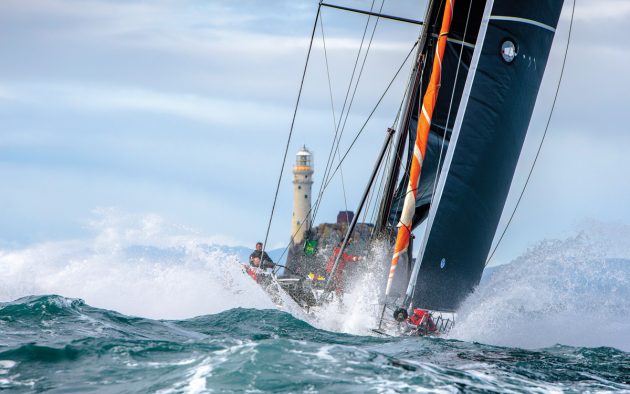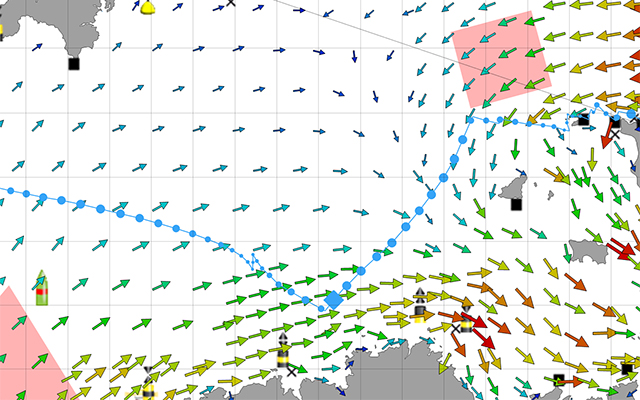Dee Caffari, veteran of six circumnavigations and the first woman to sail solo both ways around the world shares offshore race tips with Andy Rice
Dee Caffari believes that getting ready for a big offshore race is a constant process. “It’s all about the preparation and I split my five top tips into three areas; the route, the boat, and the people,” she says.
When you’re building up towards a pinnacle event like the Rolex Fastnet Race, every Channel race and RORC offshore before then is a training opportunity, to identify the gaps in your armoury and to create a plan to fill those gaps. “A lot of this comes out in the debrief at the end of the race, although this is a crucial process that is often overlooked or skimmed over because you’ve just spent two days working really hard and are possibly feeling very tired,” explains Caffari.
“But the debrief is invaluable if you’re going to learn from things you did right. And of course, the things that you did wrong. It’s also really important to acknowledge the things that went really well for you so that you grow the confidence and you build on those activities.”
Dee develops cheatsheets for every scenario, as a quick-reference manual for things to remember in the heat of the moment. “It’s really good to have these cheatsheets to refer to when you’re tired and the pressure is on.”

Photo: Carlo Borlenghi / Rolex Fastnet Race
Walk the course
This year’s Rolex Fastnet Race has a new route, but for any race you compete in, don’t just rely on past experience but actually go through the details of the course and plan your navigation well in advance.
You want to know where the Exclusion Zones are, where the hazards are, whether there are any firing ranges, or naval activity. And you want to know what the lights are if you pass them at night.
Article continues below…
Fastnet Race navigation: tactics for the new finish
The new Rolex Fastnet Race course, finishing in Cherbourg instead of Plymouth for the first time this August, offers more…
New Fastnet course: How the changes will affect this offshore classic
Discovering that the Rolex Fastnet Race will finish in Cherbourg for 2021 and 2023, I was initially very open minded…
Then you want to look at the weather: look at what kind of leg each section of the race is and what’s involved. Judge your level of confidence in the forecast as you get closer to the time, and whether you’re going to make those critical tidal gates, because we know that in the case of the Fastnet Race it is all about whether you do or don’t get through those tidal gates.
Sail inventory
Have you got the right sails for the course? Are we mainly reaching or are we mainly upwind and downwind? For the new Fastnet route we’ve got that extra 90 miles on the end of the course, taking us to Cherbourg. So have we got the right sails for reaching as well as for the upwind and downwind?

Before we set off, we want to run all the tapes, check all the packing, check the batten tensions, so that if we need to make a sail change it all happens easily, whether it’s daytime or night, avoiding the possibility of any kind of ‘cluster’ which might catch us out.
Run safety checks
Go through the safety gear in detail. Double-check the requirements of the equipment needed. And it’s all very well having the equipment on board, but people also need to know how to use it. So make sure the crew are familiar and go through your drills. Do they know how to use the VHF? Have you done a man overboard drill? Have you practised it? Do people know what to do in an emergency? It’s too late to find out when it actually happens.
Take your time, make the effort, practise it, and even write up those procedures so that you’ve got them in a prominent place. If you want people to read them, the best two places on the boat are either by the galley or in the heads. This makes it more likely for people to spend time actually reading through this vital information.
Prioritise nutrition
It’s very common for crews to underestimate the impact of food (and hydration). If you want your crew to perform at 100%, keep them well hydrated and well fed. Make sure there is enough food for people and that they actually want to eat it! Don’t dismiss the impact that a hot, nutritious meal has on performance.

Rolex Fastnet Race: on board Turn the Tide on Plastic, skippered by Dee Caffari, . Photo by Jen Edney/Volvo Ocean Race
The minute you’re a little bit dehydrated, or you’re feeling a little bit under the weather because you haven’t been eating regularly, you’re going to find it really hard to make those critical decisions when it really counts.
Get organised
Check your personal admin: have you got the right gear to go offshore? Have you got your head torch? Is it charged or does it need batteries? Do you know how to use it without blinding your fellow crew when you turn it on? Have you got a trim torch? (Practise using these torches, because there is a knack to it.)
Also make sure you have the right clothing for the forecast. Any idiot can get wet and cold. It’s the bright ones that stay warm and dry, which allows them to perform at their best.
Be diligent with your watch system so you get ample opportunity to rest. You want to be sailing at 100% at the end of the race, just as you were at the start. Eat, drink and sleep when you need to, so that you can keep up that performance all the way to the finish.
 If you enjoyed this….
If you enjoyed this….
Yachting World is the world’s leading magazine for bluewater cruisers and offshore sailors. Every month we have inspirational adventures and practical features to help you realise your sailing dreams.Build your knowledge with a subscription delivered to your door. See our latest offers and save at least 30% off the cover price.






